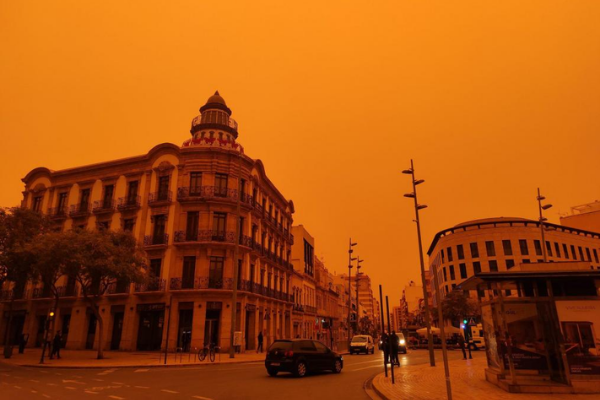The Belgian sky might look slightly different this Wednesday, with an orange hue expected to fall over parts of the country. But what is behind this strange phenomenon?
Those who live in the Mediterranean might be familiar with what Spaniards call the “calima”: a fine layer of sand from the Sahara finding its way to Europe. Clouds of desert sand made their way to Madrid on Monday, after which the sand rose up to France.
The north of France has been especially affected, and it is likely to stay until Thursday, with an anticyclone from Greece blocking the clouds from returning south.
The phenomenon itself is not exceptional, more so its appearance in northern Europe is certainly unusual, as is its prolonged duration.
As storms in the Sahara whip up particles of sand and dust, the smallest particles remain in the air thanks to a temperature difference between the hot air and the cooler ground. The wind then carries these particles up to Spain, France and perhaps even Belgium.
If Belgium is affected, the air quality will likely be poor this Wednesday and Thursday, as weather stations in Madrid measured an “extremely unfavourable” air quality during the calima.
The Royal Meteorological Institute of Belgium (IRM) forecasts that the dust cloud should reach the country by Wednesday.

